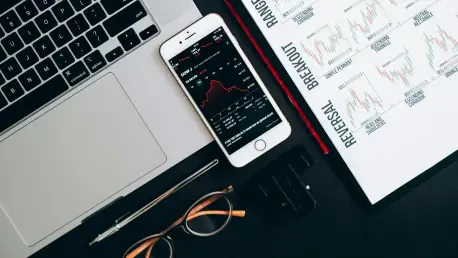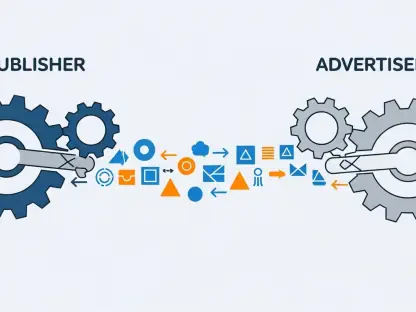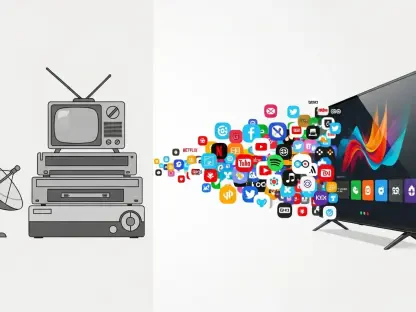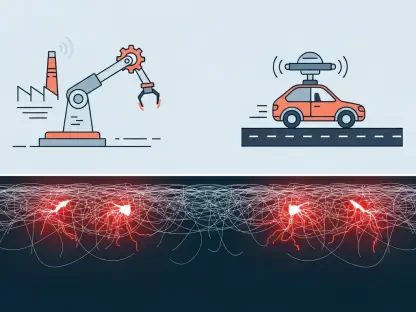The digital divide in New York City has been a persistent issue, with disparities in broadband access significantly impacting low-income communities. Recognizing this challenge, Mayor Eric Adams has launched the “Liberty Link” pilot program, aimed at providing broadband access at little to no cost for households struggling financially. Announced in collaboration with the New York City Department of Housing Preservation and Development (HPD) and the New York Public Library (NYPL), the initiative sets out to empower nearly 2,200 households across 35 affordable housing buildings in the Bronx and Upper Manhattan. The three-year pilot is supported by a $3.25 million investment from HPD, which aims to benefit minority- and women-owned business enterprises (M/WBEs) engaged in constructing and operating the network infrastructure.
Tackling Socioeconomic Disparities
Core Challenges in Broadband Adoption
Addressing socioeconomic disparities in broadband access has been a focal point of the Liberty Link initiative, particularly considering the Bronx’s low broadband adoption rate of 22.4% in New York City. As the Affordable Connectivity Program (ACP) reaches termination, the need for alternative solutions has grown, especially for families who previously depended on federal aid to maintain internet access. The Liberty Link pilot not only seeks to bridge this gap but also sets the stage for testing diverse models that could potentially expand citywide, offering a blueprint for addressing digital inequities.
The program’s launch comes at a delicate time, with skepticism surrounding the sustainability of such initiatives amid political change. Mayor Adams has aligned Liberty Link with previous endeavors like Big Apple Connect, which similarly emphasized digital equity as a policy priority. However, the impending mayoral election introduces uncertainties regarding future leadership and its commitment to these directives. Crucial to the program’s success will be adapting technological solutions that ensure scalability and resilience, a vital component for keeping the vision of universal access alive.
Emphasizing Digital Equity
A major theme throughout the Liberty Link concept is the reinforcement of digital equity, which aspires to offer resources and opportunities, leveling the playing field across socioeconomic lines. The pilot initiative replaces an abandoned “Master Plan,” demonstrating a shift in strategy that incorporates lessons learned from earlier projects. Diverse technological solutions are under consideration, marking a departure from previous frameworks, and embracing innovative options that better cater to community-specific requirements.
The commitment extends to empowering M/WBEs with at least half of the HPD’s investment directed towards these enterprises. By fostering entrepreneurship within disadvantaged sectors, the project is set to dynamically enhance local economies and contribute to creating sustainable digital infrastructure. Such empowerment is anticipated to encompass not only technical solutions but also social elements that foster community engagement and digital literacy, crucial for long-term accessibility enhancements.
Overarching Strides in Digital Equity
Collaborations and City Initiatives
City-led initiatives, like Liberty Link, exemplify a growing trend toward leveraging public resources in partnerships with nonprofit organizations. This proactive approach is seen as vital in addressing the digital divide, as municipal resources offer a solid foundation for implementing successful programs. The collaboration with the NYPL is particularly valuable, aligning with the library’s mission to widen access to education and digital learning platforms. The synergy between various organizations lays a groundwork that enriches the pilot’s objectives beyond mere connectivity.
Such initiatives underline continuity in supporting internet access for low-income New Yorkers while navigating political and fiscal trials. Channels for public feedback and community input are being established to inform the program’s trajectory, making it an interactive endeavor rather than a top-down imposition. By reaching out to stakeholders and maintaining a dialogue within affected communities, the pilot program can refine its execution strategies and maximize impact, subsequently guiding future expansions across the city.
Innovation and Potential Challenges
Liberty Link stands as a pivotal step forward in bridging the digital divide, moving away from past initiatives to prioritize accessibility, technological diversity, and socioeconomic empowerment. Through experimentation with diverse technological models, the program is carving a path toward finding effective scalability that could inspire similar efforts beyond New York City’s boundaries. The narrative emphasizes the chronology of digital equity efforts, tracing the evolution toward this current initiative that aims for tangible advancements in closing the connectivity gap.
However, the initiative faces potential challenges that could impede progress, including securing sustainable funding and maintaining political support amidst shifting administrations. By articulating a robust framework and securing community-based buy-in, Liberty Link is poised to overcome these hurdles, pushing digital equity forward and redefining access standards across diverse neighborhoods.
Liberty Link’s Impact and Future Projections
Tackling socioeconomic disparities in broadband access is a main goal of the Liberty Link initiative, particularly in light of the Bronx’s notably low broadband adoption rate of 22.4% within New York City. With the Affordable Connectivity Program (ACP) ending, there’s an increased urgency for new solutions to support families who relied on this federal aid for internet access. The Liberty Link pilot aims to bridge this gap, serving as a testing ground for various models that could be scaled citywide, offering a framework for reducing digital inequities.
Launching at a sensitive time, this initiative faces skepticism about its sustainability amid political shifts. Mayor Adams has connected Liberty Link with past projects like Big Apple Connect, which also focused on digital equity. However, the looming mayoral election brings uncertainty regarding future leadership and its dedication to these priorities. The program’s success will depend on developing technological solutions that are scalable and resilient, crucial for maintaining the goal of universal access and equitable digital inclusion.









